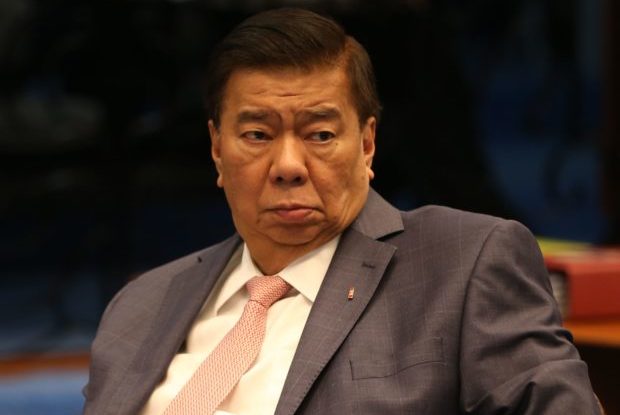
Senate Minority Leader Franklin Drilon (File photo EDWIN BACASMAS / Philippine Daily Inquirer)
MANILA, Philippines — Can the 1,914 heinous crime convicts who have been released be rearrested and sent back to prison?
According to Sen. Franklin Drilon, it can be done if the release was in violation of the law and rules.
“They can be rearrested on the authority of People vs. Tan,” Drilon said.
Facts of the case
The senator was referring to the 1967 ruling on the case of Fidel Tan who was ordered rearrested by the Supreme Court.
Tan was meted with a penalty of up to four years and two months imprisonment. His sentence became final in 1959. The Court ordered that he be turned over by the provincial warden to the Director of Prisons.
However, the warden did not turn him over. Instead, he continued serving his sentence at the Samar Provincial Jail.
After two years, eight months and 21 days, he was released by the warden by computing and crediting the good conduct time allowance.
The provincial prosecutor moved for Tan’s rearrest, insisting that he was never turned over to the national penitentiary and that the warden had no authority to the GCTA under the Revised Penal Code and Act No. 2489 of the Philippine Legislature in 1914.
According to the warden, the director of prisons issued an order withholding transfer of prisoners due to congestion and prison riots. The
warden added that Tan also has a medical condition requiring his stay in the provincial prison facility where he was being treated.
The warden said his computation of the good conduct time allowance of Tan was made in good faith.
The high court, in ordering Tan’s rearrest, said it was “merely a continuation of the penalty he had not completely served due to the erroneous act of the warden.”
“Service of penalties and allowance for good conduct are specifically, even elaborately, governed by the Penal Code and do not depend upon the good faith of the warden and of the prisoner,” the high court said.
But it clarified that he was still entitled to credit for good behavior from the time he was jailed on March 2, 1959.
DOJ and DILG joint review
Justice Secretary Menardo Guevarra, however, was cautious when asked about the future of the 1,914 heinous crimes convicts already freed because of good conduct.
“I cannot disclose it, baka kasi may maapektuhan kaagad. So for prudence sake, hindi ko muna sasabihin. Mahirap sabihin,” Guevarra told reporters.
He added that he still could not comment on the release of the convicts “whether by mistake, in good faith.”
“So we will see. Meron kaming theory, pero we don’t want to disclose it,” he said.
The joint committee reviewing the Implementing Rules and Regulations of Republic Act No. 10592 and the Bureau of Corrections’ (BuCor) Uniform Manual on Time Allowances and Service of Sentence has 10 days to complete the review and come up with a draft.
“After the guidelines, ang preference namin kasi matapos yung review. After that, we can deal with the collateral issue with what to do sa mga na-release na [referring to the 1,914], but for now ang priority namin ay yung review ng guidelines talaga,” he added.
Guevarra said they could propose a measure about the 1,914, which he said the affected people could challenge before the Supreme Court.
“We have got to do something that will prompt any interested party to bring it to court,” he added.
RELATED
Te warns Panelo on sending 1,914 heinous crime cons back to jail: It’s illegal